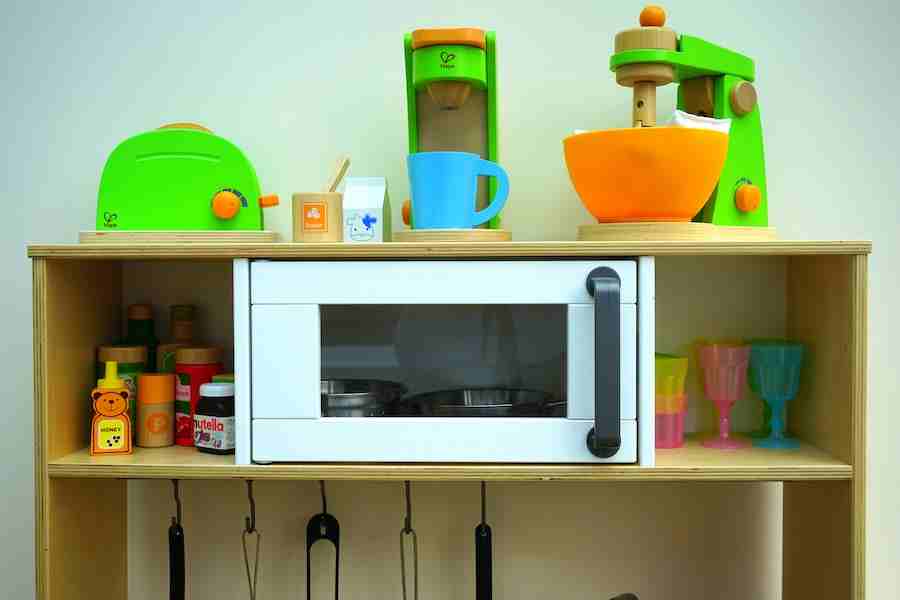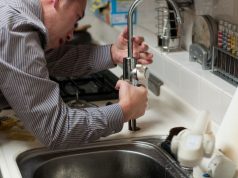Microwaves have become an indispensable part of modern kitchens, offering convenience and speed in heating meals. However, amidst the convenience, questions about safety persist, particularly regarding the use of metal utensils. Can you put a metal spoon in the microwave without consequences? This article delves into the science behind microwaves, explores the potential hazards of metal interaction, and offers practical insights into safe microwave practices. Understanding the relationship between metal and microwaves is crucial for preventing accidents and utilizing these kitchen appliances responsibly.
Can You Put A Metal Spoon In The Microwave?
No, it is not safe to put a metal spoon in the microwave. Metal can cause sparks, potentially leading to fire or damaging the microwave. The microwave’s electromagnetic field interacts with the metal, resulting in dangerous outcomes. It’s best to use microwave-safe utensils and containers to avoid any risks.
The Science Behind Microwaves
Microwaves are a form of electromagnetic radiation that falls within the radiofrequency range. These waves are adept at heating food quickly due to their interaction with water molecules present in the food. When microwaves enter the microwave oven, they pass through the walls and interact with the water molecules within the food. This interaction causes the water molecules to vibrate rapidly, generating heat throughout the food. This heat is what warms up the food efficiently and evenly.
However, when it comes to metal objects, the story is quite different. Metals are highly conductive materials, capable of reflecting and absorbing electromagnetic waves, including microwaves. When a metal object, such as a spoon, is placed in the microwave, it can reflect the microwave energy in unpredictable ways. This can result in the concentration of energy in certain spots, leading to sparking and even fire.
The sparking phenomenon occurs because metals have a large number of free electrons that can move easily. When microwaves interact with these electrons, they induce an electric current, which can generate heat and, under certain conditions, cause sparks. The shape, size, and placement of the metal object within the microwave can influence how the microwave energy is concentrated and the likelihood of sparking. In essence, the science behind microwaves underscores the importance of avoiding metal objects to ensure safe and effective heating.
Why Metal And Microwaves Don’t Mix?
- Reflective Properties: Metals are excellent reflectors of electromagnetic waves, including microwaves. When microwaves encounter a metal object, they bounce off its surface, leading to the concentration of energy in localized areas. This can cause sparking, overheating, and potential damage to the microwave.
- Electric Current Induction: Metals contain free electrons that can easily move within the material. When exposed to microwaves, these electrons can be set in motion, generating an electric current. This current can create heat and sparks, increasing the risk of a fire hazard.
- Concentration of Energy: The interaction between microwaves and metal can lead to the concentration of energy at specific points on the metal object. This concentrated energy can quickly lead to overheating, potentially causing the metal to become hot enough to ignite nearby materials or cause the microwave to malfunction.
- Unsafe Combustion: The intense heat generated by the concentration of energy in metal objects can exceed their ignition point. This can lead to the metal heating to the extent that it ignites or combusts, posing a serious fire risk. Moreover, the combustible materials around the metal object can also catch fire due to the extreme heat.
- Microwave Damage: Placing metal in the microwave doesn’t just endanger the metal object itself; it can also damage the microwave oven. The intense heat and sparking can cause arcing, which damages the microwave’s interior, including the enamel coating and the magnetron—the component that generates the microwaves. This damage compromises the oven’s efficiency and safety.
Tips For Preventing Microwave Accidents
- Avoid Metal: Never put metal objects, including utensils, aluminum foil, or containers with metal rims, in the microwave. This will prevent sparking, overheating, and potential fires.
- Use Microwave-Safe Containers: Choose microwave-safe containers and utensils made of glass, ceramic, or microwave-safe plastics. These materials are designed to withstand the heat generated by microwaves without posing risks.
- Cover Food Appropriately: When heating food, use a microwave-safe lid or microwave-safe plastic wrap to cover the dish. This helps retain moisture and heat, ensuring even heating while preventing splatters.
- Stir and Rotate: For even heating, stir or rotate your food during the microwaving process. This prevents cold spots and minimizes the risk of overcooking or overheating in specific areas.
- Follow Manufacturer’s Guidelines: Always follow the manufacturer’s instructions and guidelines provided in the microwave’s manual. This includes recommended heating times, power levels, and safety precautions.
- Heat Beverages Cautiously: When heating liquids like water or milk, use a microwave-safe container and be cautious when removing it. Superheating can occur, causing the liquid to erupt suddenly when disturbed.
- Check for Microwave-Safe Labels: Look for microwave-safe labels or symbols on containers and packaging before placing them in the microwave. These labels indicate that the material is designed to be used safely in microwaves.
- Allow Standing Time: After microwaving, let your food stand for a brief period. This allows heat to be distributed evenly and reduces the risk of burns from steam.
- Monitor Children: Ensure that children are supervised while using the microwave. Teach them about safe microwave practices and the potential dangers of using the appliance improperly.
- Inspect for Damage: Regularly check the microwave’s interior for any signs of damage, such as chipped paint, rust, or burn marks. Address these issues promptly to maintain the microwave’s safety.
What Happens When Metal Sparks In The Microwave?
- Electric Current Generation: Metals, being conductive materials, have free electrons that can move easily. When exposed to microwaves, the electromagnetic field induces a flow of electric current within the metal object. This current generates heat due to the resistance encountered by the moving electrons.
- Concentration of Energy: The microwave’s electromagnetic energy interacts with the metal in unpredictable ways, leading to the concentration of energy in specific spots on the metal’s surface. These concentrated energy points can rapidly become extremely hot.
- Arcing and Sparks: As the energy concentration intensifies, it can surpass the metal’s melting point, causing it to heat up to the point of ignition. This can result in arcing, which is the formation of sparks between the metal’s hot points. These sparks can jump from one point to another on the metal’s surface.
- Fire Hazard: The sparks generated by arcing can pose a significant fire hazard, especially if they come into contact with flammable materials in the microwave or nearby. The intense heat from the arcing can cause these materials to catch fire quickly.
- Microwave Damage: Not only does sparking pose a risk to your safety and potential fire hazards, but it can also damage the microwave itself. The intense heat and sparks can damage the interior of the microwave, including the enamel coating and the magnetron—the component responsible for generating microwaves.
- Electrical Hazards: In addition to fire risks, sparking metal in the microwave can create electrical hazards. The electric current induced in the metal can interfere with the microwave’s electrical circuits, potentially leading to malfunctions or even damaging the appliance irreparably.
Conclusion
In conclusion, understanding the risks associated with placing metal objects in the microwave is paramount for ensuring your safety and the proper functioning of your appliance. The science behind microwaves and the conductive nature of metals reveal the potential for sparks, overheating, and even fires. By adhering to microwave safety guidelines, using microwave-safe containers, and staying vigilant while operating this kitchen marvel, you can prevent accidents, safeguard your home, and enjoy the convenience of microwaving without compromising your well-being.
FAQ’s
Can I Put A Metal Spoon In The Microwave?
No, it’s unsafe to put a metal spoon in the microwave. Metal can cause sparking, leading to potential fires and damage.
Why Does Metal Spark In The Microwave?
Metal sparks in the microwave due to the interaction between its conductivity and the microwave’s electromagnetic energy, leading to concentrated energy points, arcing, and potential fire hazards.
What Should I Use In The Microwave Instead Of Metal?
Opt for microwave-safe containers made of glass, ceramic, or microwave-safe plastics to avoid hazards related to metal interaction.
Can I Use Aluminum Foil In The Microwave?
It’s generally not recommended to use aluminum foil in the microwave, as it can cause sparking and potentially damage the appliance.
Why Is It Important To Follow Microwave Guidelines?
Following microwave guidelines ensures safe and effective heating, prevents accidents, and maintains the longevity of both your microwave and your well-being.





















